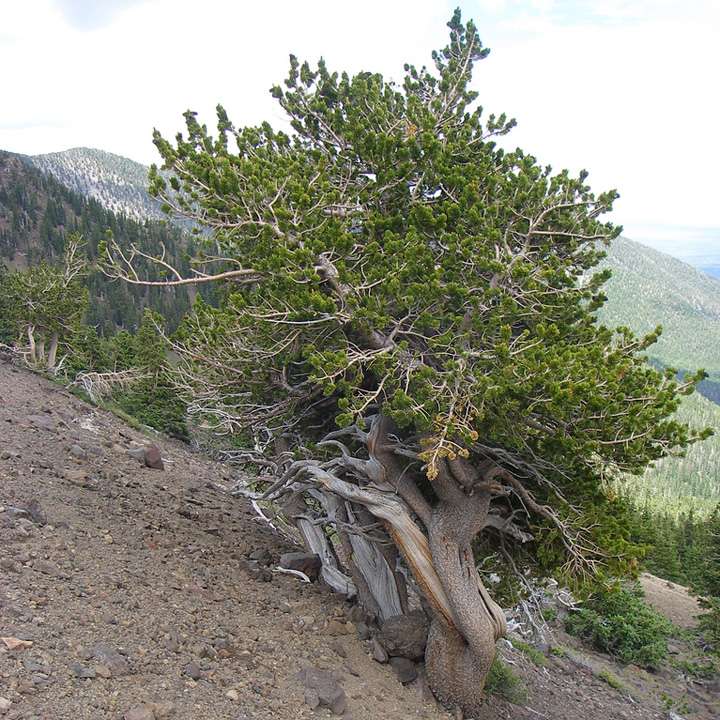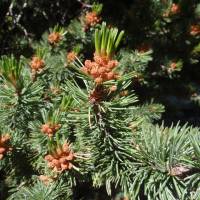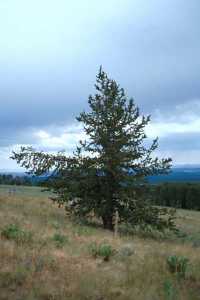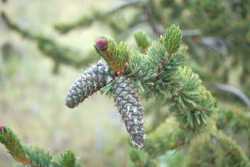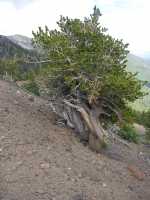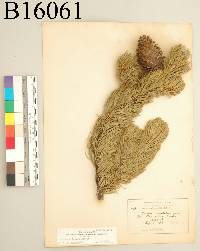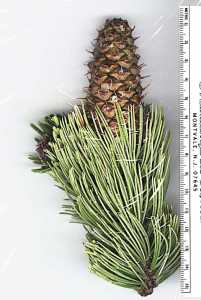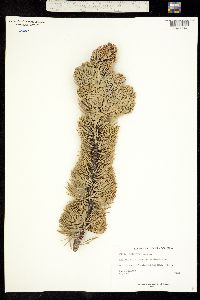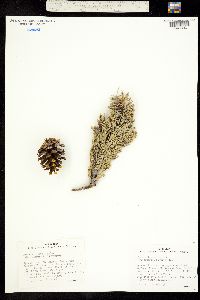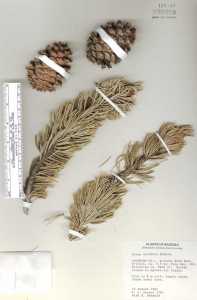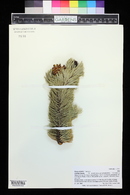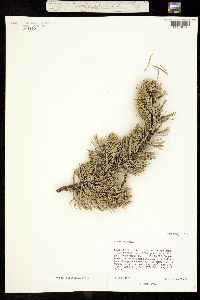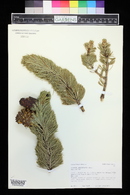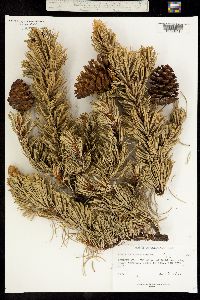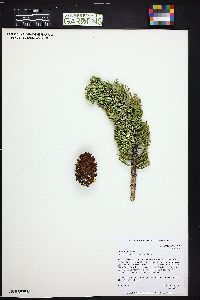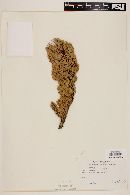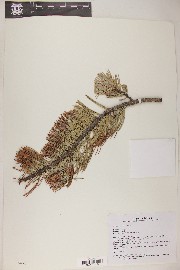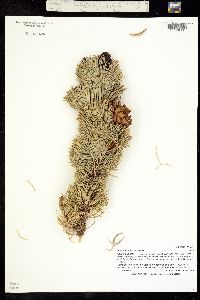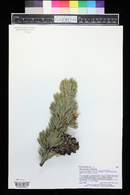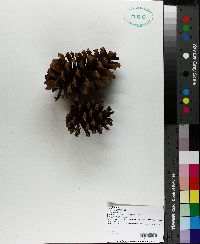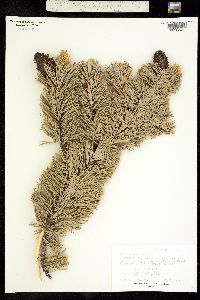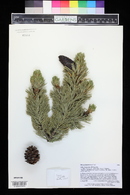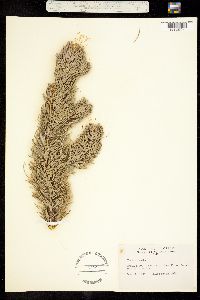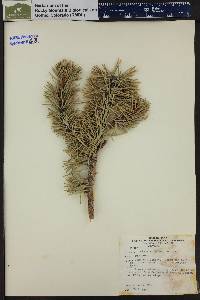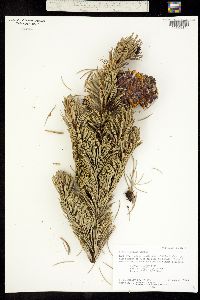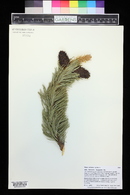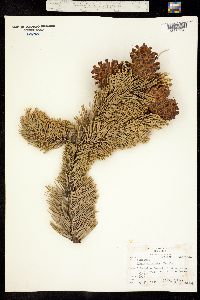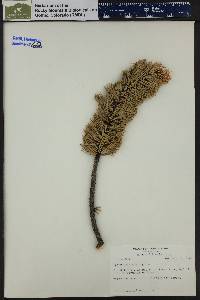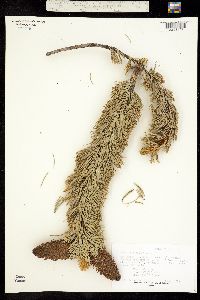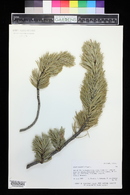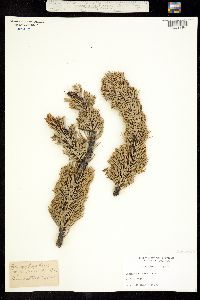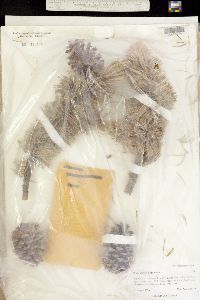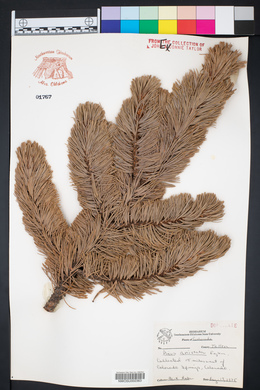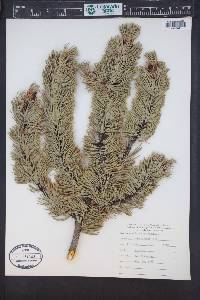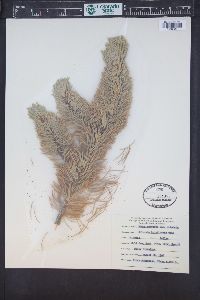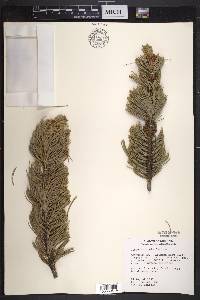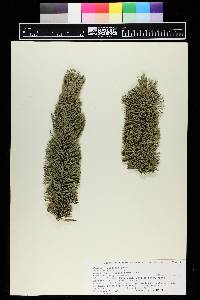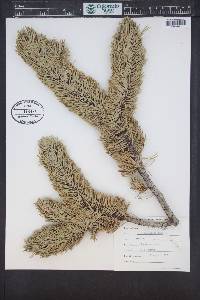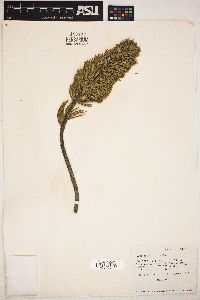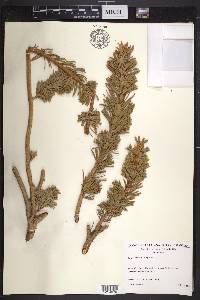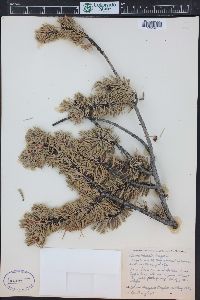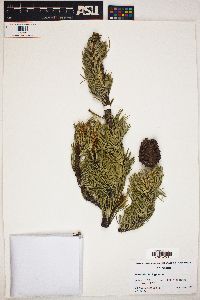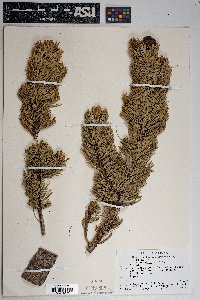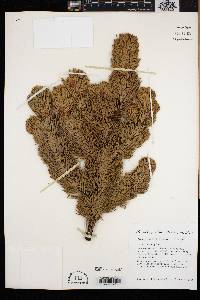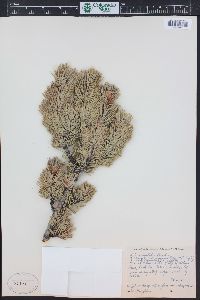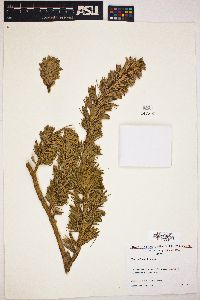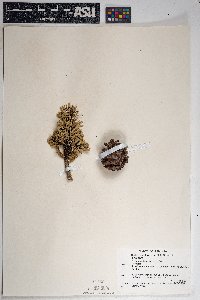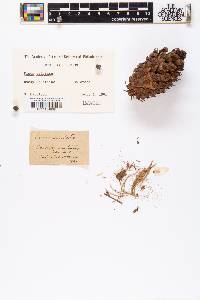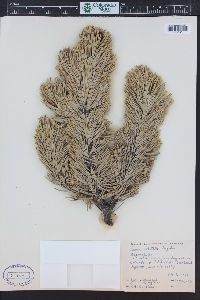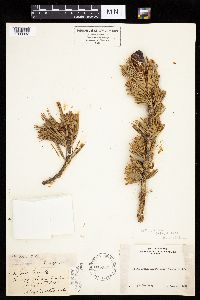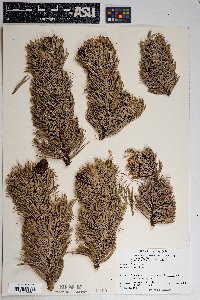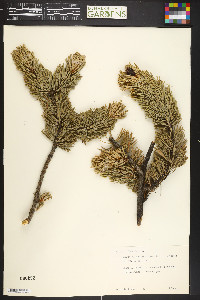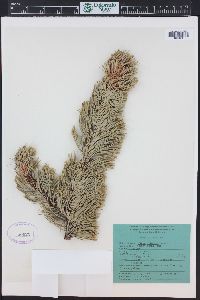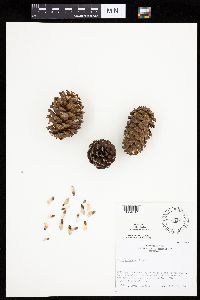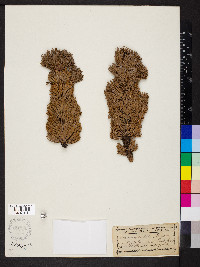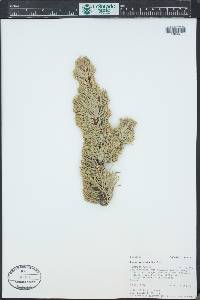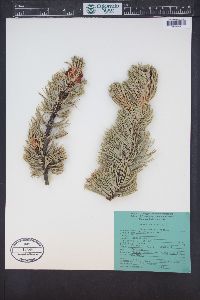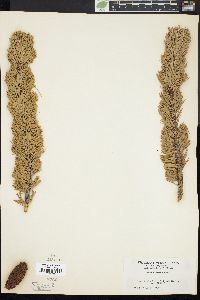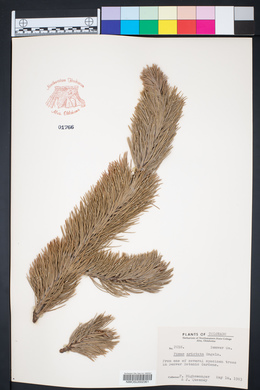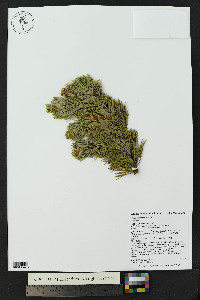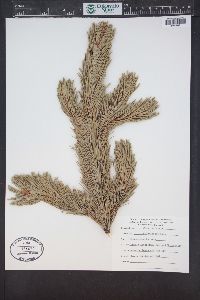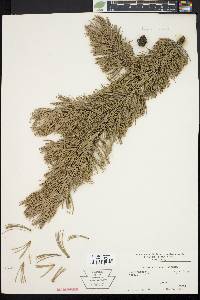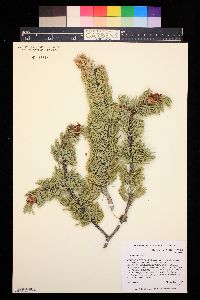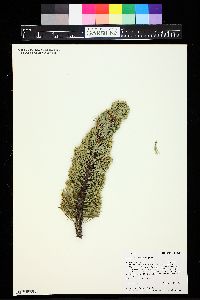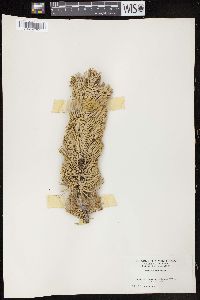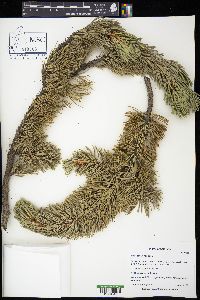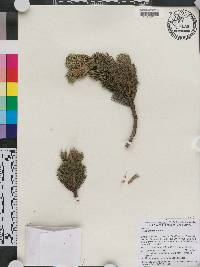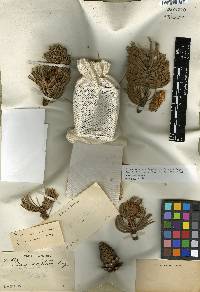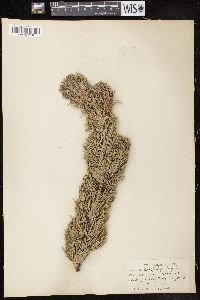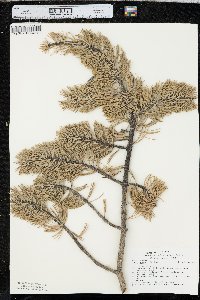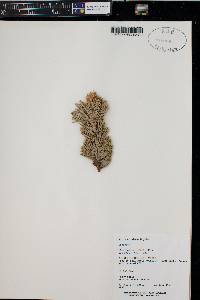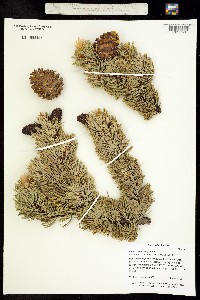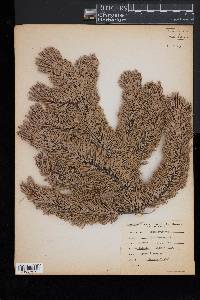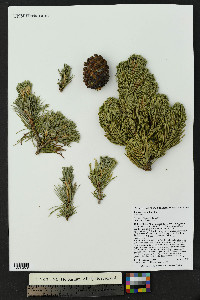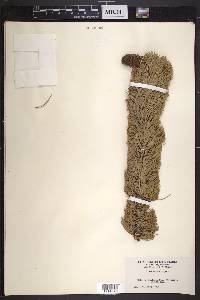Pinus aristata
|
|
|
|
Family: Pinaceae
Bristle-Cone Pine, more...bristlecone pine, foxtail pine, hickory pine
[Pinus balfouriana var. aristata (Engelm.) Engelm.] |
Trees to 15m; trunk to 1m diam., strongly tapering, twisted; crown rounded, flattened (sheared), or irregular. Bark gray to red-brown, shallowly fissured, with long, flat, irregular ridges. Branches contorted; twigs pale red-brown, aging gray, puberulent, young branches resembling long bottlebrushes because of persistent leaves. Buds ovoid-acuminate, pale red-brown, ca. 1cm, resinous. Leaves 5 per fascicle, upcurved, persisting 10--17 years, (2--)3--4cm ´ 0.8--1mm, mostly connivent, deep blue-green, with drops and scales of resin, abaxial surface with strong, narrow median groove, adaxial surfaces conspicuously whitened by stomates, margins entire or distantly serrulate, apex conic-acute to conic-subulate; sheath 0.5--1.5cm, scales soon recurving, shed early. Pollen cones ellipsoid, ca. 10mm, bluish to red. Seed cones maturing in 2 years, shedding seeds and falling soon thereafter, spreading, symmetric, lance-cylindric before opening, lance-ovoid to ovoid or cylindric when open, 6--11cm, purple to brown, nearly sessile; apophyses much thickened; umbo central, with triangular base, extended into slender, brittle prickle 4--10mm. Seeds obliquely obovoid; body 5--6mm, gray-brown to near black; wing ca. 10--13mm. 2 n =24. Subalpine and alpine; 2500--3400m; Ariz., Colo., N.Mex. Pinus aristata has leaves usually narrower and sharper than in P . longaeva and P . balfouriana , and the leaves almost always have a narrow, median groove on the abaxial surface.
General: Evergreen tree, 12-15 m (39-49 ft) tall; trunk up to 1 m in diameter; crown rounded; branches contorted, with needles densely crowded at ends of young branches, resembling bottle brushes; twigs orange-brown, becoming gray with age, puberulent; buds up to 1 cm long, reddish brown, resinous. Grayish white and smooth on young trees, reddish brown, shallowly furrowed on mature trees. Needles: Needles, 5 per fascicle, 2-4 cm long, upcurved, stiff, dark green to deep blue-green, flecked with drops and scales of resin, the adaxial (inner) surface conspicuously marked with a white stomatal line, the abaxial (outer) surface usually with a narrow median groove. Cones: Male and female cones on same tree; male (pollen) cones ellipsoid, up to 1 cm long, bluish to red or orange-red; female (seed) cones cylindric, 6-11 cm long, purple- brown, scales tipped with a slender, curved prickle 4-10 mm long (soon deciduous); seeds asymmetrically obovoid, 5-6 mm long, winged. Ecology: Rocky slopes and ridges up to the subalpine, often associated with aspen, spruce, pine, and fir; 2900-3700 m (9500-12000 ft); Coconino County (San Francisco Peaks); southwestern U.S. Notes: Pinus flexilis and P. strobiformis are similar to P. aristata, but they have flexible twigs, longer needles, and longer female (seed) cones with unarmed scales (without prickles). Bristlecone pine lives at very high elevations and is a slow-growing, long-lived species, forming a krummholz community with corkbark fir and Engelmann spruce. The population on the San Francisco Peaks is considered an outlier. One tree was documented at 1438 years of age in 1984, but trees nearing 2500 years of age have been found in Colorado. Seeds do not require a stratification period and seedlings establish best on bare, mineral soil. Bristlecone pine is intolerant of shade and is generally found on cold, acidic, nutrient-poor soils. Low-intensity fires scar and damage trees, and high-intensity fires will normally cause death. Clark's nutcrackers and red squirrels are known to cache and eat the seeds, but very little information is available on wildlife use by other species. This species is not widely used commercially due to the inaccessibility of the areas where it is found. It is currently protected from salvage in the state of Arizona. The pitch has been used by the Shoshone tribe to treat sores and boils. |
|
|
|

